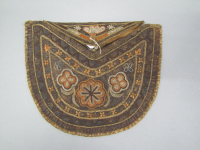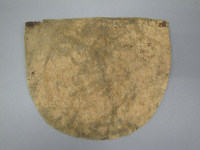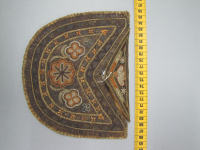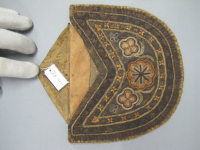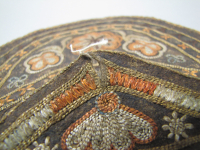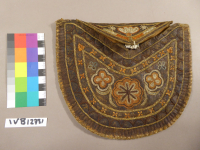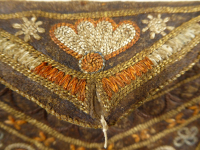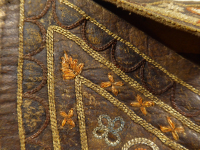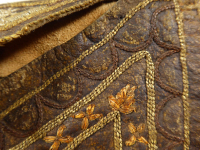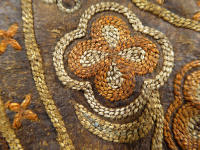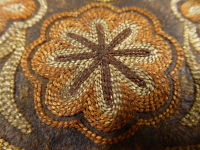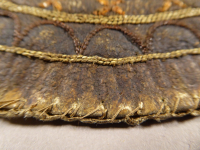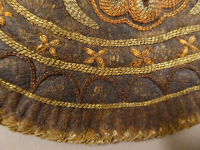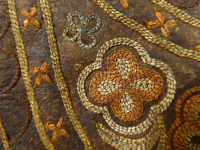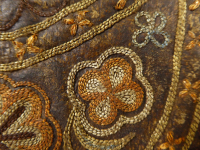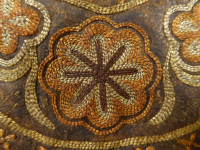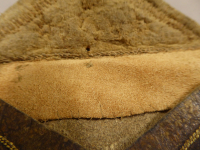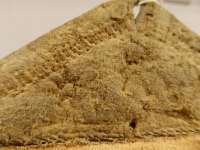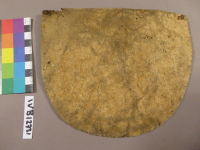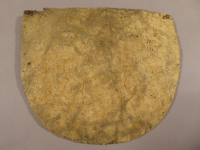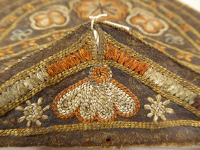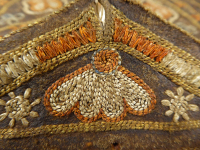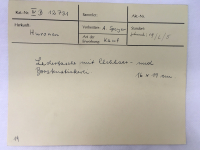round-bottomed hide pouch
round-bottomed hide pouch
round-bottomed hide pouch
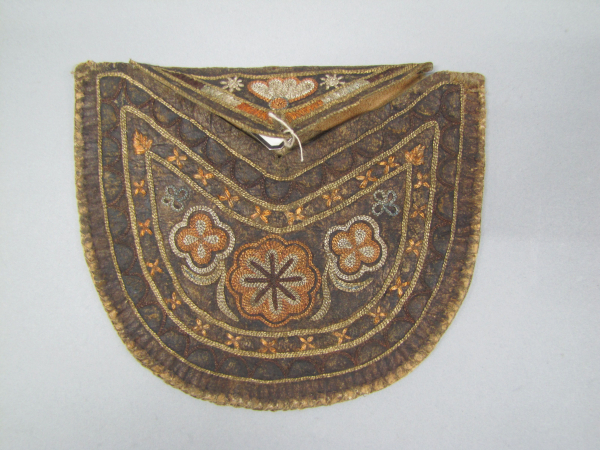
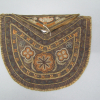
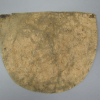
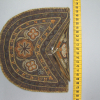
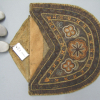
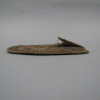
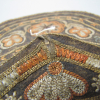
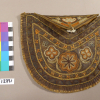
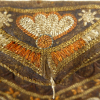
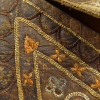
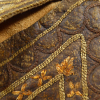
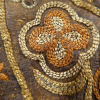
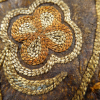
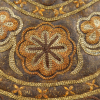
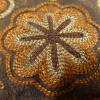
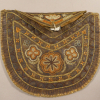

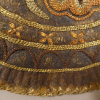
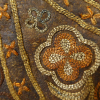
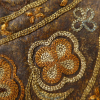
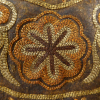
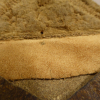
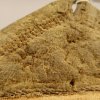
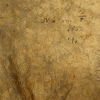

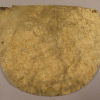
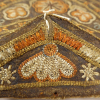
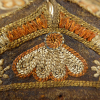
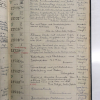


This ancestor is a Huron-Wendat semi-circular, or round-bottomed, hide pouch, dating to approximately 1852. The foundation of the pouch is made from hide and contains two pieces and a flap. Aesthetically, there is flowered patterning and a sky-dome motif border, with dark brown, orange, and white colouring schemes. Smaller orange flowers are decorated around the pouch and are likely moosehair embroidery. The larger flowers are likely fine quill embroidery. The structural seem is stitched with commercial linen thread. Although reminiscent of blackened hide, the front exterior of the pouch has been artificially darkened as seen through the natural hide on the inside of the pouch.
This pouch currently resides in the Ethnologisches Museum Berlin, Germany.
The catalogue card reads "Huronen" (Huron), an identification provided by the donor Arthur Speyer. GRASAC researchers agreed with this identification, based on the pouch's design and construction.
Museum documentation and GRASAC research notes
Read More About This Relative
Hide, quill, moose hair, potentially artificial dye?
Quillwork embroidery; moosehair embroidery; two-piece construction.
Small lowers in blue and orange. Larger flowers in white and orange. Largest, central flower in orange, white and brown. Thin scalloped brown line represents the sky dome motif.
Alan Corbiere and Laura Peers observed that, normally, a pouch such as this would have been decorated with ribbon or binding alongside the bottom - this is absent from this pouch.
Alan Corbiere and Laura Peers also observed that this pouch is an example of the co-existence of quillwork embroidery and moosehair embroidery within one relative. The larger flowers are completed with fine quills, identifiable by their smoothness. The stitching of the smaller orange flowers looks less precise or clean in comparison, and indicates moosehair. The sky dome motif (brown scallops) are also likely moosehair embroidery.
Laura Peers observed that the date of 1852 is late for such dark dyes, as seen in the sky dome motif and the darkening of the front of the bag; darker dyes had largely fallen out of fashion by that date. Alan Corbiere observed that the pouch is not truly blackened hide; looking inside, GRASAC researchers noted that the interior of the pouch is clean, or natural hide - not black. GRASAC researchers were unclear what method was used by people to artificially darken the surface of the hide.
There are two inscriptions, in distinct hand-writing, on the reverse: "Niagara Falls" and "1852"
The measurements of 16 cm x 19 cm are taken from the catalogue card. The "height" measurement of 1 cm is approximate, and reflects the pouch when empty.
There is a date handwritten on the reverse of the pouch that reads 1852, and this matches the style and design of the pouch.
Provenance
Purchased from Speyer in 1960.
There is additional information on the reverse of the catalogue card in German (see photograph).
Museum documentation
About This GRASAC Record
Created by Nikolaus Stolle during a research visit to the museum commissioned by Ruth Phillips and supported by her research funds.
Record augmented with images and information taken during a GRASAC research trip to the Ethnologisches Museum Berlin in May 2019. Members were: Alan Corbiere, Laura Peers, Cara Krmpotich, Hannah Turner (photography), Charlie Feaver (photography), Maureen Matthews, and Monika Zessnik (curator).
43.095342377156, -79.064983908048
"Niagara Falls" is hand written on the reverse of the pouch. It is unclear if that means Niagara Falls New York, or Niagara Falls Ontario. This is likely the place where the pouch was purchased. It is not clear if this is where the pouch was made.
 Knowledge Sharing Platform
Knowledge Sharing Platform

